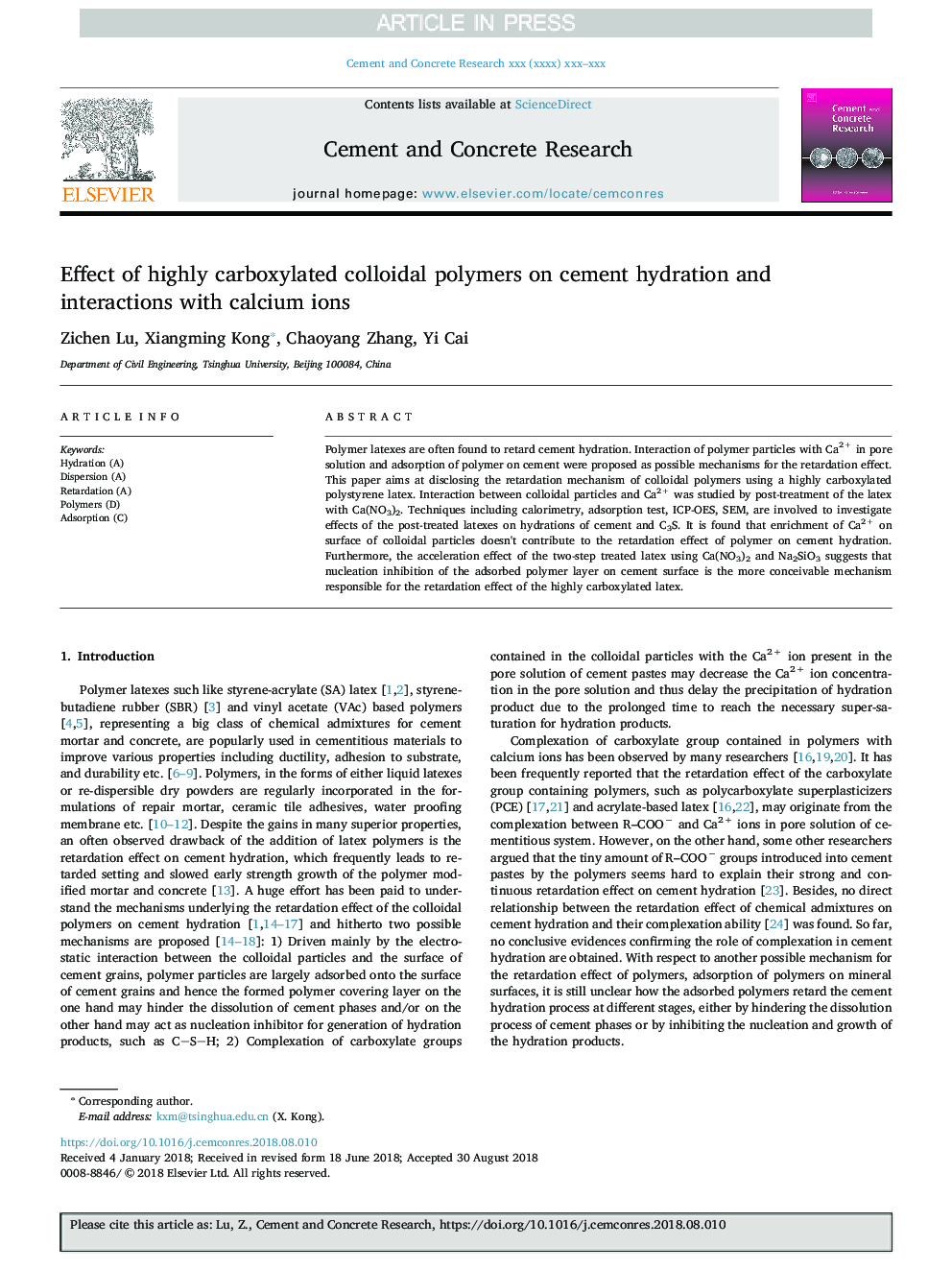| Article ID | Journal | Published Year | Pages | File Type |
|---|---|---|---|---|
| 10155357 | Cement and Concrete Research | 2018 | 14 Pages |
Abstract
Polymer latexes are often found to retard cement hydration. Interaction of polymer particles with Ca2+ in pore solution and adsorption of polymer on cement were proposed as possible mechanisms for the retardation effect. This paper aims at disclosing the retardation mechanism of colloidal polymers using a highly carboxylated polystyrene latex. Interaction between colloidal particles and Ca2+ was studied by post-treatment of the latex with Ca(NO3)2. Techniques including calorimetry, adsorption test, ICP-OES, SEM, are involved to investigate effects of the post-treated latexes on hydrations of cement and C3S. It is found that enrichment of Ca2+ on surface of colloidal particles doesn't contribute to the retardation effect of polymer on cement hydration. Furthermore, the acceleration effect of the two-step treated latex using Ca(NO3)2 and Na2SiO3 suggests that nucleation inhibition of the adsorbed polymer layer on cement surface is the more conceivable mechanism responsible for the retardation effect of the highly carboxylated latex.
Related Topics
Physical Sciences and Engineering
Engineering
Industrial and Manufacturing Engineering
Authors
Zichen Lu, Xiangming Kong, Chaoyang Zhang, Yi Cai,
